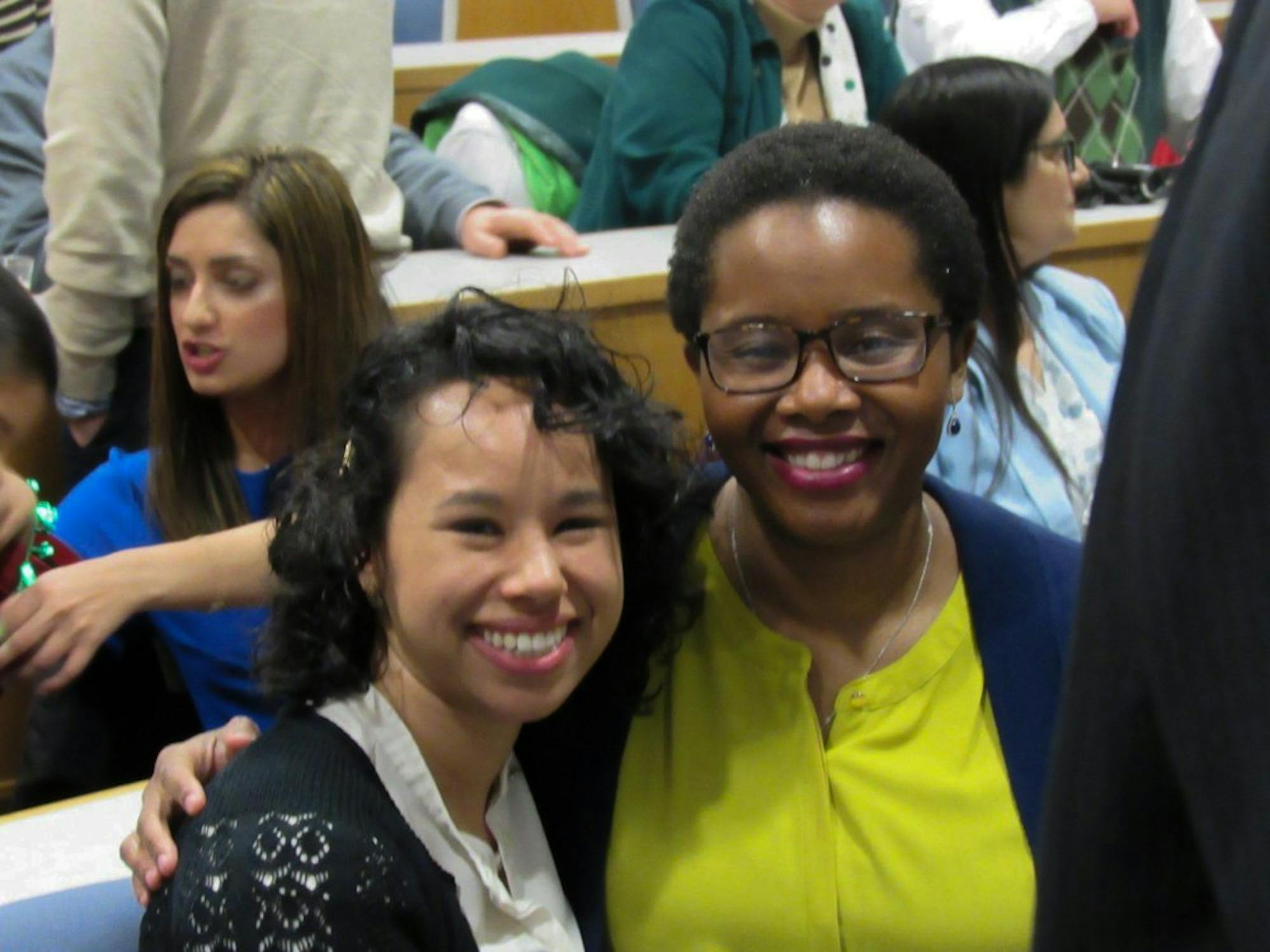On March 17, 67 Geisel School of Medicine students celebrated Match Day and found out where they will spend the next three to seven years completing their medical residency training. According to Geisel’s interim senior associate dean for medical education Greg Ogrinc, primary care was the most popular specialty choice among Geisel students for the second year in a row, with 29 choosing residencies in family medicine, internal medicine or pediatrics. After primary care, the next most popular specialties were general surgery, anesthesiology and psychiatry, and California, Massachusetts and New York were the most popular destinations. In 2016, 81 graduating students matched, with 41 students going into primary care and the most popular locations being California, Massachusetts, New Hampshire and New York.
“We are very excited about the caliber and strength of where our students matched this year,” Ogrinc wrote in an email, adding that many students matched at top academic programs in all geographic areas.
Match Day — which falls on the third Friday in March each year — is a communal celebration at Geisel, according to Lovelee Brown Med’17 and Asia Peek Med’17. While other schools simply disperse decision envelopes and open them together, Dartmouth has many special traditions. Each Match Day, Geisel students begin festivities at noon, which include comedic sketches written by the graduating class. This year’s performance included a “Westworld” parody and other dedications to students. In a random order, students are called to the stage to receive their envelope — walking to a song they chose prior to Match Day — in front of faculty members, peers, family members and other guests. Each student called up places a dollar in bowl until the last student, who receives the money, is called upon. The event is also live streamed so that family members unable to travel to Hanover are able to take part in the celebration. While students can choose not to reveal their match results publicly, Brown said almost all do.
In order to match with a residency, students must apply to the Electronic Residency Application Service, which is overseen by the American Association of Medical Colleges, in September of their fourth year of medical school. Students are then invited to interview at hospitals and other facilities, after which both students and medical centers create a ranking list of their match preferences. The lists are then entered into an algorithm that yields the best match according to the preferences. The algorithm gives more weight to the students’ preferences, and the student does not necessarily have to be the facility’s first choice in order to be assigned to it. Students are notified that they are matched prior to Match Day but do not know to where they are matched until Match Day.
Brown and Peek were both assigned to their top choices — University of California, Los Angeles for internal medicine and Beth Israel Deaconess Medical Center, a program affiliated with Harvard Medical School, for psychiatry, respectively — and were the final two called at this year’s event.
“Matching was truly the culmination of my wildest dreams realized,” Brown said.
According to Peek, however, there is currently a bottleneck in the matching system, since there are more applicants than there are spots available for residencies. The number of residencies available versus the number of medical students is incongruous in part because residencies are determined by federal funding, whereas medical schools and programs are formed independently. Thus, as the number of students seeking medical residencies increases, the number of spots available to them does not necessarily follow suit.
Additionally, Brown recounted how difficult the match process itself was, including having to decide a specialty, determining which rounds and rotations to take part in and deciding who to approach for a letter of recommendation. Students receive mentoring and guidance from faculty members within their specialty of choice and Geisel deans throughout the entire process. Brown said many faculty who have connections in the students’ desired facilities will call on students’ behalf to “help push the needle” toward getting an interview.
Assistant dean for medical education Susan Harper said that she assists students in the procedural matters of matching but also focuses on other variables in finding residencies, such as what students want to do while they are in residency, how close they want to be to their families and how they will manage their relationships if they are in any.
“We want to ensure that the student has a good balance in their life in addition to their careers,” Harper said.
Brown said that students at other institutions she met during the interviewing process were surprised by how well Geisel students match.
“That was something surprising to hear from people who are potentially people who I may work with but also potentially people who were vying for the same spot I am,” she said. “So it was a huge compliment to have that being said from a colleague at another institution.”
Brown said Geisel helped her realize her medical aspirations through exposure to Geisel faculty, who she said were “great clinical thinkers and compassionate practitioners who don’t just think about the biomedical sciences and the clinical sciences, but about the person that they’re treating and the family and the network.” Brown and Peek also mentioned a unique capstone course most take in their final year of medical school, which helps them understand the real-world applications of medicine, including Medicare, Medicaid and “big questions that you don’t learn when you’re learning the Krebs cycle,” Brown said.
“It really impresses upon budding physicians like ourselves how complicated it is to not only treat a patient but treat an entire community and help to improve the health of a society,” she said.




